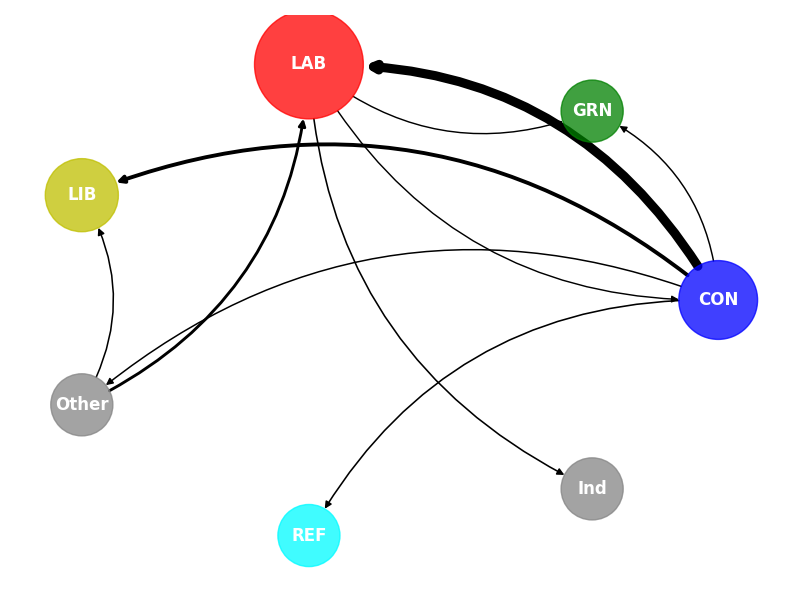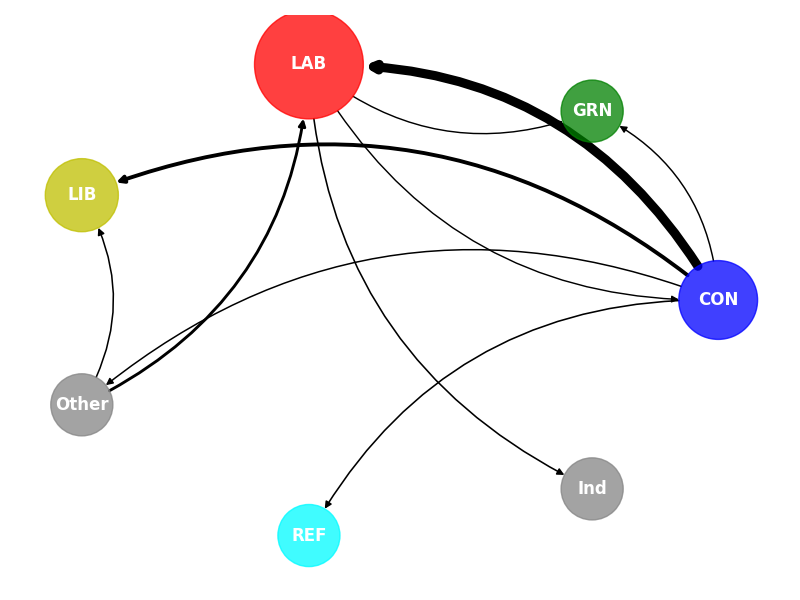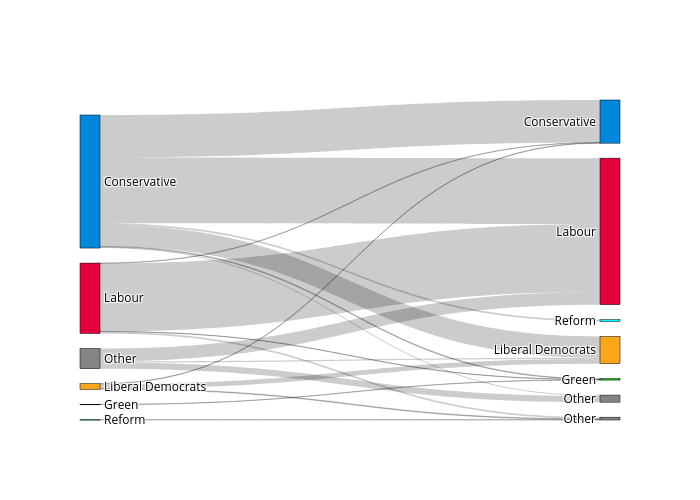Where All Did the Seats Go? Understanding Who Won and Who Lost in the 2024 General Election.

Labour's victory at the recent 2024 General Election was quite impressive. In a previous post, we covered how just how significant this was with respect to vote share margins within each constituency. Labour clearly have the advantage, but how does this look like in terms of seat gains and loses?
The Sankey diagram below shows where exactly Labour got their seats from, by comparing results from the 2019 general election (left) to the 2024 election (right) on constituency-level.
Between the two elections, Labour picked up almost half of their seats (186 in total) from the Conservatives. Furthermore, most of Conservative seats from 2019 ended up in the hands of Labour, the Lib Dems, Green and Reform and only managing to hold on to just 120 of their own seats!
While the results certainly look good for Labour and disastrous for the Conservatives, this doesn't tell the full story of what happened in the election, as shown in the network diagram below.

In one instance, the Conservatives gained a single seat (Leicester East) from Labour. This was primarily due to two former MPs (Keith Vaz and Claudia Webbe) splitting the Labour vote on the ballot.
This election also saw a number of independents win seats, taking them away from Labour. One of these includes Jeremy Corbyn (Islington North) - independent candidate and former leader of the Labour Party.
Other Labour losses to independents include Dewsbury and Batley, Blackburn, Birmingham Perry Barr and Leicester South. In all these cases, this was seen as a rejection of Labour's stance towards the ongoing Israel-Hamas war.




